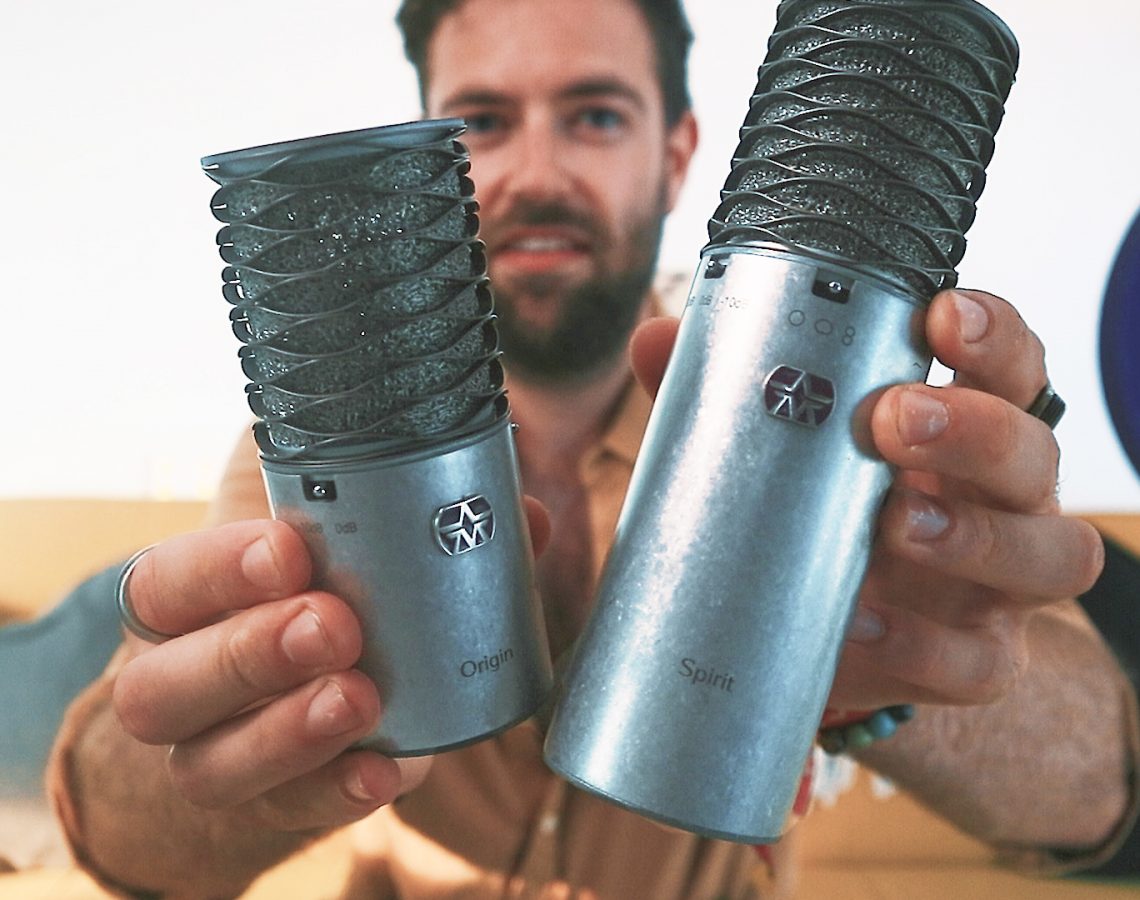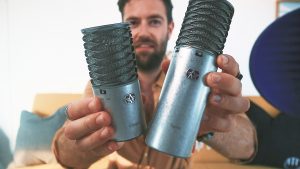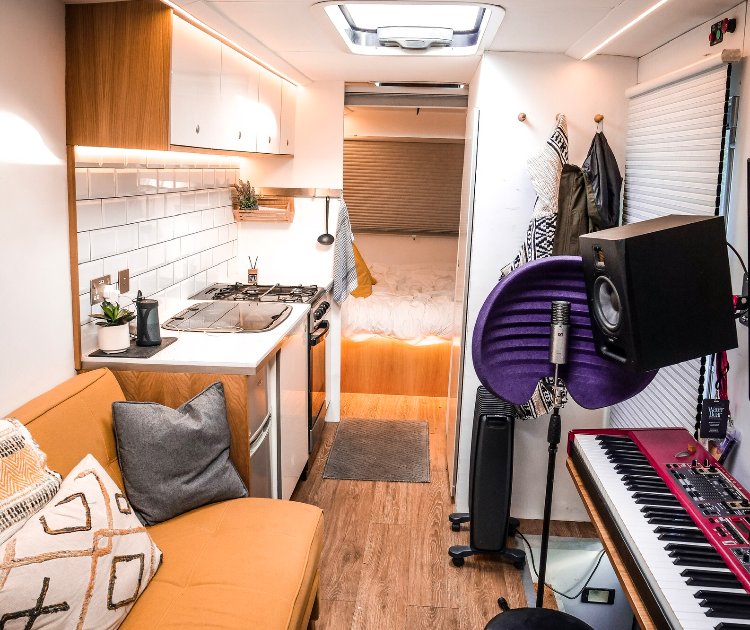Is The Spirit Aston Microphone Worth £100 More Than The Origin?

Is The Spirit Aston Microphone Worth £100 More Than The Origin?
PROS
– The Aston Spirit Microphone is Transformer based – Aston Origin is not
– Noticeable difference in quality
– Polar Pattern Switch
CONS
– Delicate mesh head if bumped
– erm…. Bigger?
– heavier?
– really… I’m struggling!
Aston Microphone Website Link & Purchase Link:
This Aston Spirit Microphone Review and other blogs here intend to be a first hand look at the products we use and my reflections after using them on the road in my songwriting bus (that sounds like I’m a nutter, but check out the About section on this website to unravel your confusion). However don’t expect in depth tech talk about frequency response, phasing, capacitors or reflex battery confections (yeah that last one I made up), instead expect an everyday songwriter to share his more basic thoughts for what I use and my findings, and somewhere I hope you find some valuable information!
I guess firstly I should start off by saying I’m not being paid to say any of the following by Aston. They did however kindly #gift us a microphone for us to try out as we ventured onto our first tour, and I figured this would be helpful to many of you as I often get asked a lot of questions about the Aston Microphones in our posts. I’m currently sat on tour number 3, so it’s safe to say I’ve had a good chance to play and use this microphone in many situations, on vocals and on instruments, which is what I am about to share.
Part 1: The price tag – is it worth £299?

So here goes, the Aston Spirit Microphone Review. Initially I was actually very surprised and slightly skeptical about the price of £299 – because it really isn’t that much for a mic of these specs. I had previously been using an SE Electronics 2200A, and the Spirit was boasting a very similar spec for around the same price, so it was easy to make a direct comparison (more on that later).
When it arrived, it was safe to say that the packaging alone was enough to make me feel like £299 was either very expensive and well hidden by packaging, or very reasonable and the packaging was the beginning of a strong relationship. The packaging was slick, simple, and gave me a similar feel to that moment when you open up a new Apple product for the first time.
Part 2: Unboxing – The experience, weight, look and feel
On initial unboxing, I noticed this mic is NOT light in anyway. Why does this matter? Well, I actually find it quite comforting from a build quality perspective. From personal experience, any lightweight microphone I’ve ever been given or bought never delivered a smooth tone or a weighty low frequency response.
But according to Aston, the Spirit ‘delivers a beautifully open sound with sparkling harmonics’! Let’s see shall we? I initially set out to use the Spirit on vocals, and this was actually the first comparison I set out to do – to see what vocals sounded like on the Spirit compared to the Origin.
Start video at 4.45 for comparison
I can’t help but agree. To find a mic, with this sound quality, 3 options of polar patterns (you can change which direction the mic records from with various selections via a switch), a low pass filter switch at 80Hz, and a +20dB and -10dB option, is rare to say the least at a price of £299. I’m still a little confused why it’s so well priced. More reasons below…
After the comparison, I was surprised! The Spirit was noticeably better for vocals I must admit – warmer, more rounded, whereas the Origin sounded a little harsher and less weighty. Im sure there’s many technical reasons for this and the Origin is still great for some applications, especially instruments with a bit more grit like an electric guitar cab for example, or a saxophone, but I like my warm vocals me!
Aston Origin vs Aston Spirit
So what makes the difference between the Origin and the Spirit? Well it all comes down to the (brace yourself for technical talk) ‘high-end transformer balanced circuitry’, whereas the Origin isn’t transformer led. In simple terms, Aston have put more research and development into the Spirit, with a panel of 33 selecting the best capacitor components and take my word, it shows in the sound! It’s the RAW photo to a JPG… hope you photography geeks liked that one.
An observation about the Spirit is that it is sometimes too good at the top end, and sometimes I have to roll some off just to bring back the warmth, but I’d much rather a mic capture too much top end rather than not enough so I have the option to play around in the mix. *DISCLAIMER* I only find this on occasion because of different location acoustics or vocal types.
I guess, whilst we’re on the photo reference, the Spirit capturing a lot of high end clearly, is like a camera taking a dark picture compared to taking slightly over exposed photo… it’s easier to keep a higher quality result if you only have to drop the brightness slightly, rather that having to brighten up a picture that is too dark and ending up with something grainy and lower quality.
Have a listen to songs we have released using this Spirit!
Conclusion – Is it worth the extra £100?
So lets start wrapping this up, is it worth the extra £100? It’s 100% worth the extra £100. I mean… if you can afford £199 for the Origin, you can afford the Spirit with an extra bit of saving. Aston will quite rightly tell you that they’re both great mics and are internally very different, which is true, but as a user that can only afford to buy one (myself targeted in that statement), I’d sink another £100 into getting the Spirit.
Yep. The Origin is a great mic, but since I’ve had the Spirit, I’ve just barely used the Origin because there’s no point when I have the higher spec one sat next to it.
You wanted to know if the Spirit was worth the extra £100, there it is. Let me know if this has helped, I’m new to blogging and this particular post was actually my first!


Leave a Reply